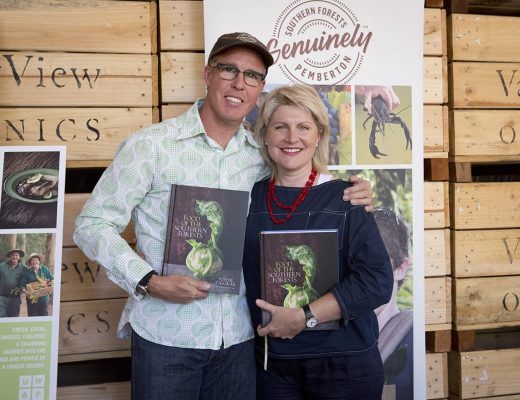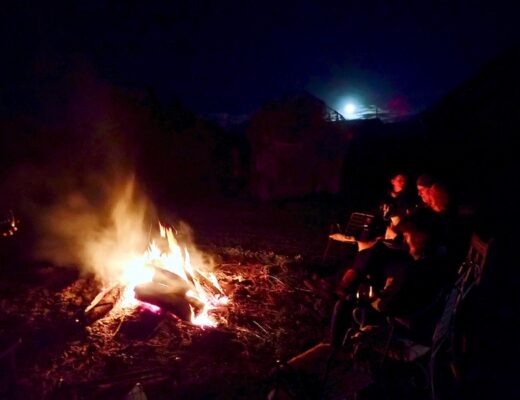Autumn has always been my favourite season. Nature’s visual bedtime story and final push to deliver what’s needed for Winter’s rest and dormancy. I remember as a child sitting with stoic resignation on the Light Pass school bus or drifting in and out of boredom in the classroom, gazing out the window at vineyards with their diminishing canopies of crunchy textures and golden brown colours thinking how beautiful their contrasting wild and messy uniform rows looked. I still think that so.
It’s a little over a month since I arrived back in the Barossa Valley in South Australia where I grew up and left 30 years ago. As I sit and write this, gentle rain falls, sourdough bread bakes, fig jam and chutney cools and a mug of warm tea sits to my right while the electric oil heater periodically cracks into service. It’s the end of another day’s work in my new little kitchen, which has gone some way to comfort the melancholy that this weird hole of social isolation has brought on for so many of us.
Given the uncertainty of how long the limitations on travel as a result of the Coronavirus will last, I decided it best to put 6 months aside from my original motorcycle travel plans and by doing so, feel some sense of immediate autonomy and agency in this altered world we’re all grappling to find stability in.
Even though now parked under the carport of a little stone cottage in Angaston I’ve rented for this time, my bike will continue to be my companion and joy offering that long craved for freedom and connection with the passing landscape albeit now very short trips and geographically limited.
So instead of my original intent to share my travel experiences, these posts will be more domestic in nature and set within the boundaries of the Barossa Valley region and South Australia at large as restrictions slowly lift. Inevitably they’ll include a bit of history, local culture, landscapes, botanical, architectural, crafting, fresh produce and cooking content. All stuff that keeps me engaged with the world and hopefully stuff you like too. This is some of what April offered up.
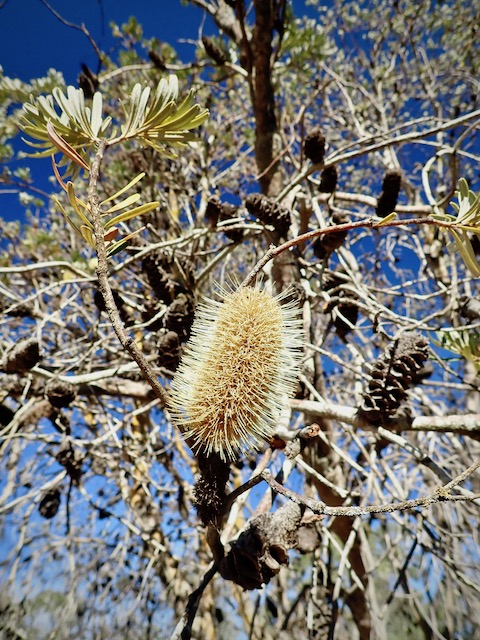

The colours of Autumn are mostly thought of as those from European tree species however many natives such as Banksia and Eucalyptus also throw extraordinarily beautiful colour in this season and into Winter but through flowers not leaves. I find their vibrancy and shapes just as perennially captivating as their showy imported neighbours.


Having lived in the Southern Forests region of Western Australia for 15 years, where the tops of ancient Karri trees touch the sky at a height that’s impossible to crane your neck back far enough to see, coming in contact now with trees that have lived long enough to exist when history for my primary school books was being made is something I truly revere. This monument is for Colonel William Light and Captain Charles Sturt; two of the most iconic names in South Australia’s pioneer history who came through the now location of Light Pass in the 1830s. Light was looking for a way to travel east to the Murray River. The settlement of Light Pass was subsequently established in 1844. I’m not sure if this magnificent Red Gum tree, a living monument of time, that’s not too faraway from this historical spot was in its infancy then but with that girth it can’t be too far off.
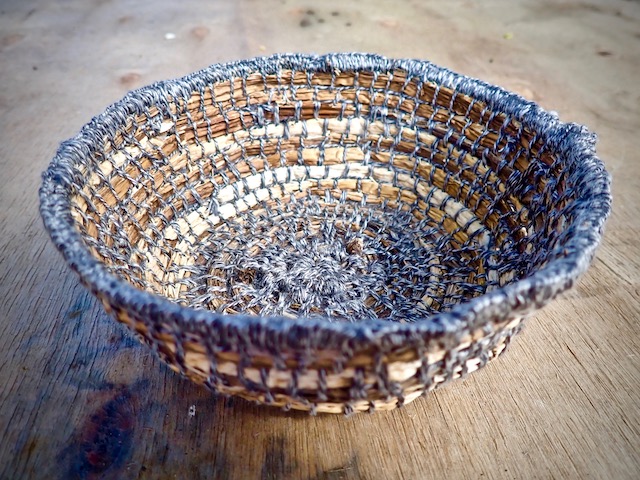
One of the positives of this Coronavirus period has been the daily routine of walking. Even though going for a walk has always offered the same benefits, this mental circuit breaker from isolation has taken on a whole new level of anticipation and reward. For the first couple of weeks while I was staying with friends in Light Pass, the main route of my daily walk was along a culvert-edged road filled with a variety of dried weeds. A bag full of which ended up bound and stitched into a little coil-style basket that I’d learnt the technique to make some years ago with a Nyoongar Aboriginal artist at a workshop in Margaret River, WA.

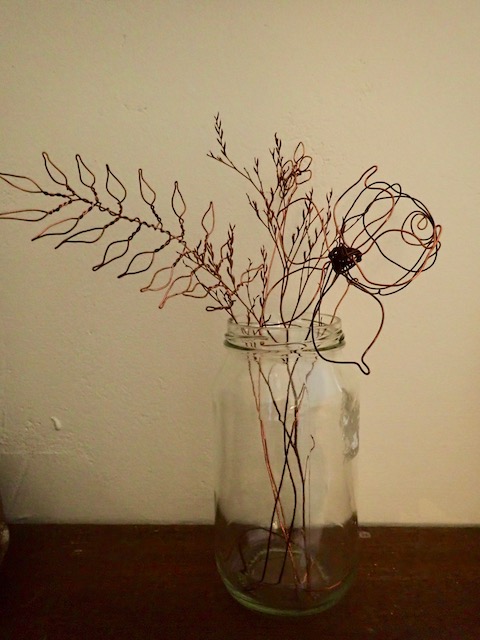
Along with a bit of basketry, the crafting amusements also included a bit of felt-pen egg decorating for Easter and using salvaged copper wire bent into flowers and foliage. Falling regularly down the rabbit-hole that Pinterest sucks me into, I saw this and thought to give it a go as I happened to be watching the 3rd series of the Handmade’s Tale. Praise be! It’s one of the most therapeutic crafty activities I can highly recommend.
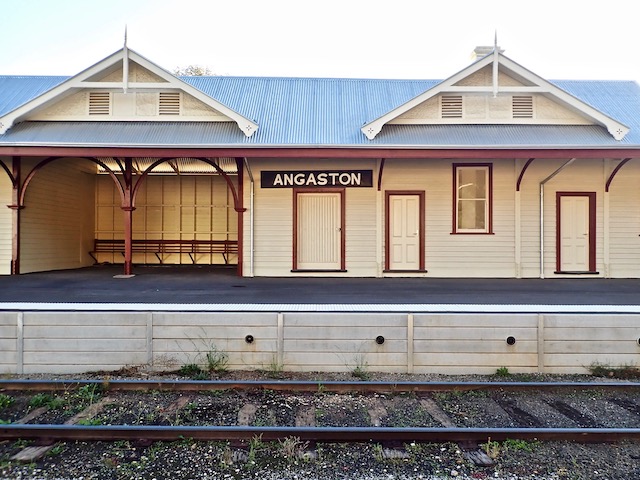
With the help and generosity of my Light Pass friends I moved to Angaston on the Easter weekend. Angaston is about 65km north of Adelaide at the highest elevation and eastern side of the Valley with about 2000 people. Originally known as German Pass, it was officially named after one of South Australia’s founders, George Fife Angas whose investment and philanthropy also included sponsoring many of the region’s early German Settlers.
Large pastoral holdings were mostly owned by British settlers. Some diversified into viticulture, winemaking, and grain and fruit growing. Smaller holdings, leased mainly by Germans from G. F. Angas, aimed at self sufficiency. In 1842 Angas Town consisted of just one house and two dug-outs.
The railway came to Angaston in 1911, which completely revolutionized the transportation of local primary produce and resources. What was initially a five day journey with horses and wagons to transport fruit, flour, wool and locally quarried stone subsequently took two hours.
Long since decommissioned and in 2010 the track between Angaston and Nuriootpa lifted, the Barossa Council’s Masterplan for the Angaston Railway Precinct identified this central area as a community space for the recognition of local indigenous Peramangk and European settlement heritage, recreational areas for children and families, food and wine events, local plantings, relaxation and active zones, entertainment and creative spaces. Work on this revitalization project is currently underway with the above railway station building now completed.
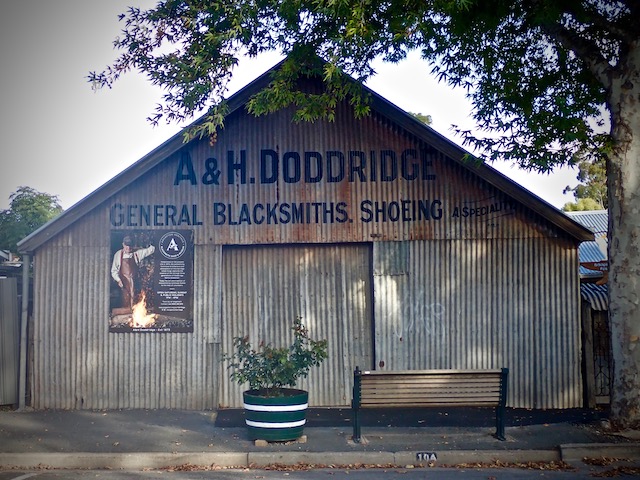
When the stone arch bridge was built over the creek at the western end of the village in 1865, a new road opened with better links to the Barossa Valley, the Murray River and Adelaide. Angaston prospered and by the 1860s there were a number of churches, a Mechanics Institute, two hotels, a police station and court house.

Remains of these early working settlement buildings still exist around the town giving it the humble charm and resilient character that no new building can come close to communicating.

I found this interesting building on another afternoon walk, which is listed in a 1996 Angaston Heritage study as having heritage value as a significant reminder of the ongoing value of the importance of horticultural activities in the Angaston district. The first building on this site was a timber and corrugated iron structure used by the Lutheran Church as a place of worship but was destroyed by fire in 1941. The land was sold to the Angaston Fruit Growers Co-operative, the site leveled and the dehydrator built to service the growing dried fruit trade after the Second World War.

Home to the oldest public buildings in the Barossa with beautiful examples of classic 19th century architecture, the stately neo-Gothic style Angaston Town Hall was built of local marble and bluestone in 1911. It was the centre of community life offering all types of classes, soldiers’ farewells, dramatic and musical performances, dancing and silent movies. Australia’s first community owned movies started here in 1914 and continued until the 1960’s.
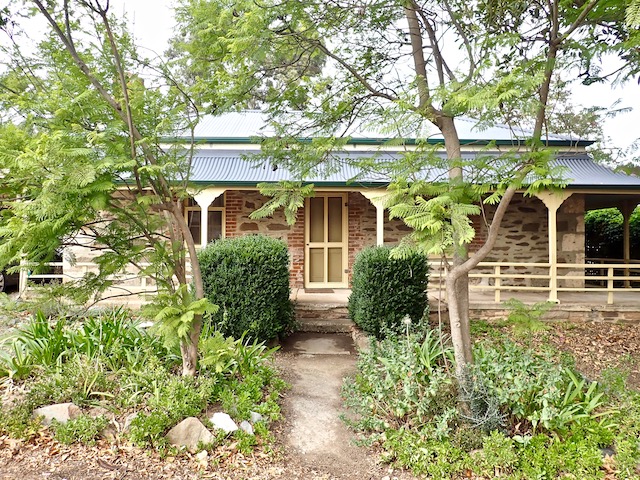
In the same Angaston heritage study that listed the Dehydrator building, the little cottage I’m renting that’s located in the original South Angaston residential area was listed as being built of local bluestone in the 1920’s. Along with other residences in this area, they’re considered to have distinctive characteristics that are special in terms of domestic architectural style of the 1870s-80s and the 1920s.
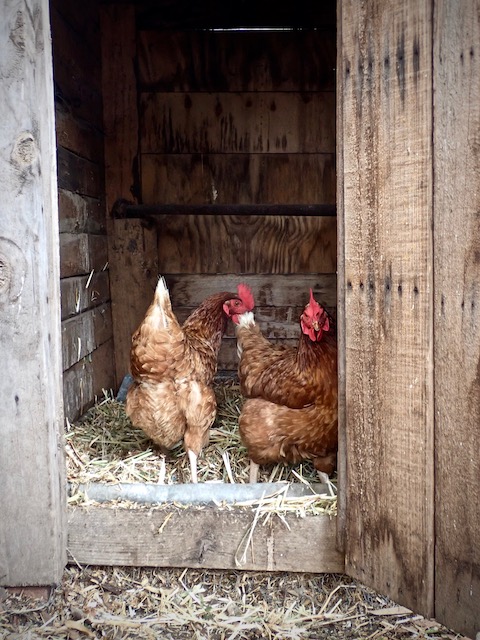
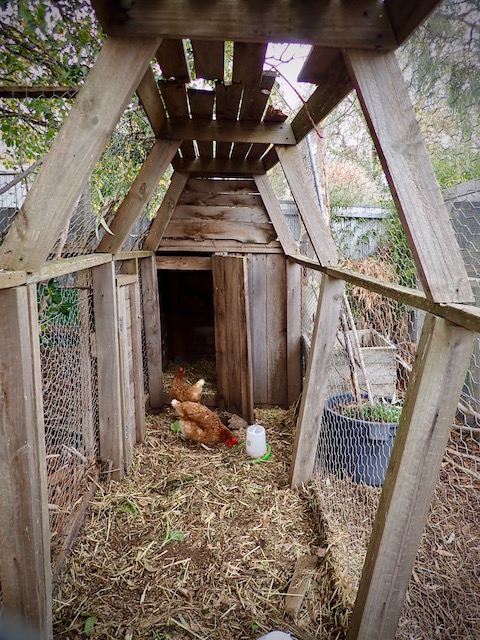
Fortunately, previous tenants left a chicken coop and a few wire netted structures with timber planter boxes that look like they were happily producing a variety of backyard produce. As laying hens have been in hot demand during this isolation time of returning to self-sufficient ways, it took a while to track down some girls of productive age. After a few days settling in and one girl doing a Chicken Run-movie-style-breakout to be returned a couple of days later by tradies over the back fence one Saturday afternoon; all three are delivering an egg a day. The plucky rebel, like the lead chook in the movie is now called Ginger.
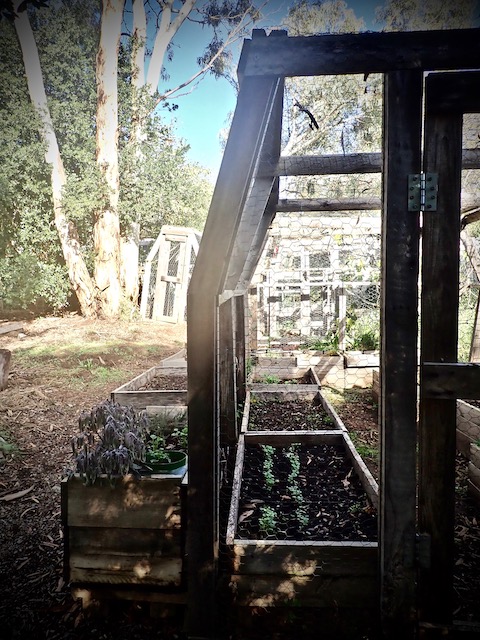
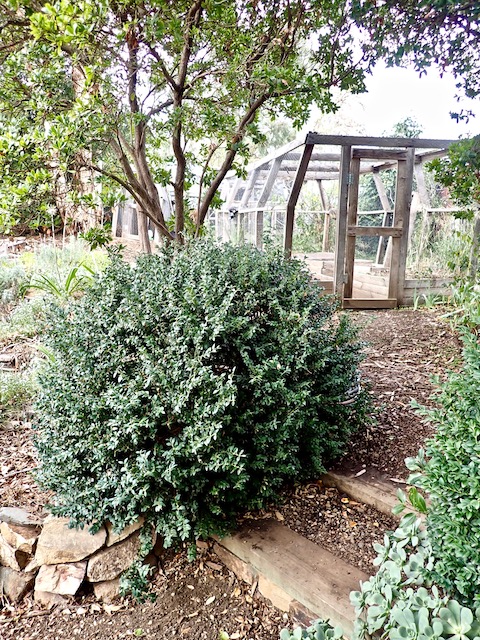
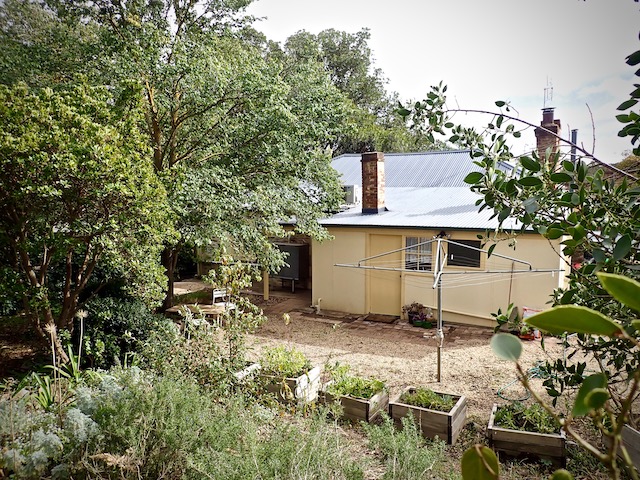
The cottage has seen renovations and extensions over the years that fortunately have retained its lovely heritage charm. As much as I love open-plan spaces, living back in a home with smaller rooms that can be closed off for more economical heating and separated purposeful use has been a surprisingly enjoyable rediscovery.
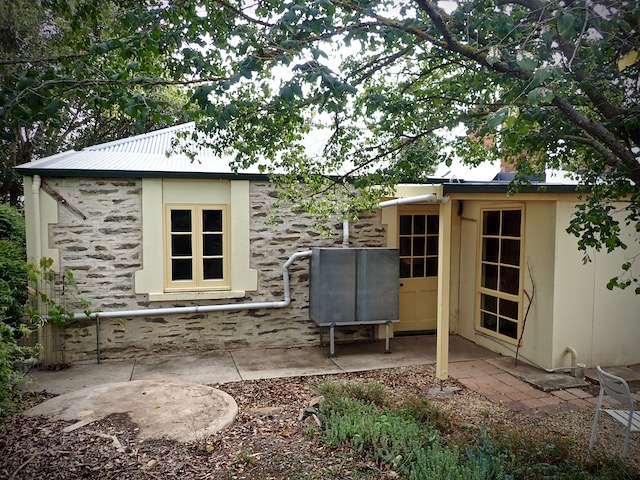

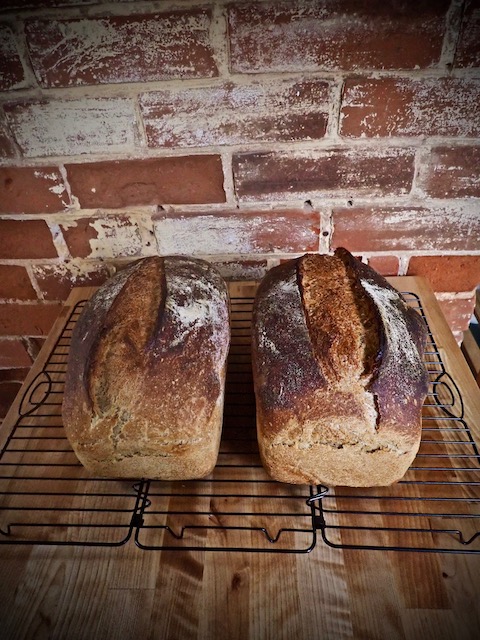
Aside from setting up the fundamentals, making a place feel more a home has included getting some preserves on the pantry shelf and a regular sourdough bake. Prior to the opening of Foragers, I spent years making small batches of preserves under our then trading name Pemberton Breakaway Cottages to sell to accommodation guests and local retail outlets. It was lovely to dig out the old recipes for Zucchini Bread & Butter Pickles, Tomato & Currant Chutney, Plum & Cinnamon Jam and Quince Jam again. Even nicer to eat on toasted sourdough for breakfast knowing it’s now only for the pleasure of it.


Ceramics has also been a great interest over the years and here in the Barossa there are a few potters throwing some gorgeous functional ware. One of them is Susanna Brown and her daughter Matilda Kroesen who sell tableware and decorative bird sculptures under their business name Really Useful Pots. At the moment their studio is only open by appointment. As with all fresh produce and craft vendors, they can no longer sell at open markets, so online sales have been even more important for them: www.reallyusefulpots.com.au

This extra time for past endeavors has also brought about revisiting the pastels again. Inevitably fresh produce seems to find its way on paper as well as in the pot, pastry case or plate.

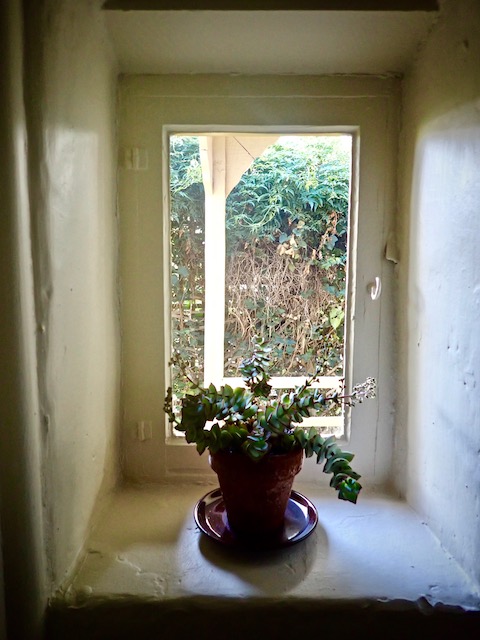
The last of the season’s fresh figs destined for more jam and chutney and a very sweet little bedroom window positioned in the original thick stone walls.

So many Foragers set-menu dinners in the Autumn and Winter seasons included a soup course. Over the years I’ve found that making a plain, velvety base on which to serve very flavourful and textural garnishes can make this very humble dish so much more of an interesting eating experience. This is one of my favourites: Creamy Parsnip Soup with Roasted Almonds & Brown Butter Sage. The recipe can be found on this website by selecting the Cook > Meals > Soups options.
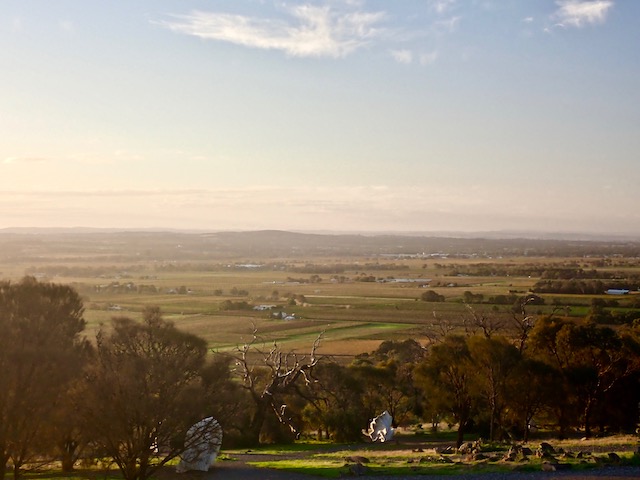
Mengler’s Hill is a popular lookout over the Barossa Valley that’s located on the route from Tanunda to Angaston. It was named after one of the early wine grape growers in the region and a lovely spot to catch the last light as it travels West carrying with my thoughts and love for family and friends there.

And so my bike patiently waits for the day we can again hit the long open road this country offers a life-time of routes to explore. Until then, a constitutional rip down Mengler’s Hill on a loop around the Valley’s perimeter will appease the wanderlust (just).


